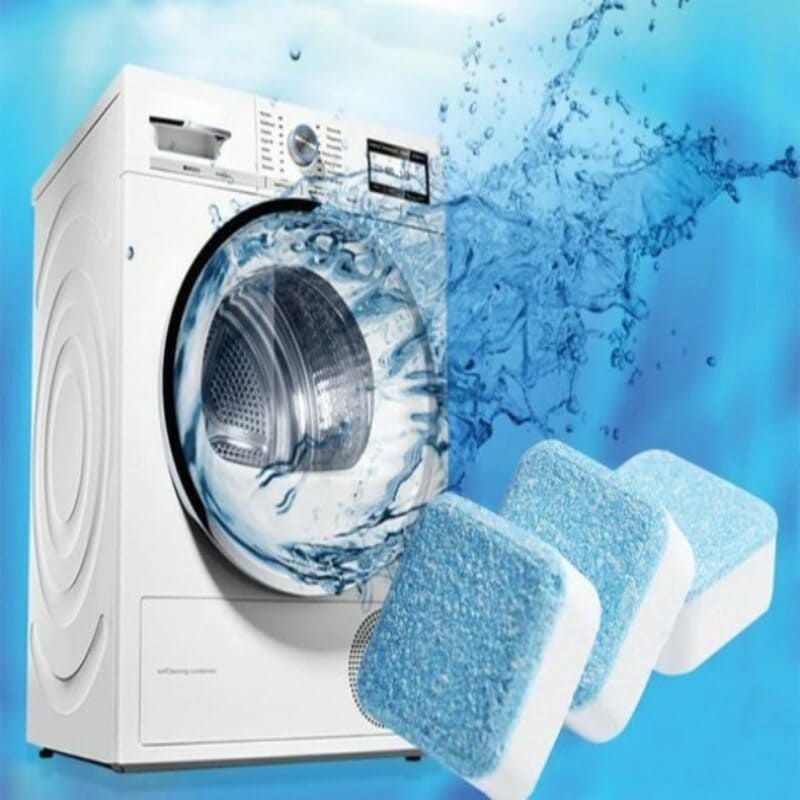Your washing machine is an essential part of your home, tirelessly cleaning our clothes day in and day out. But did you know that it also needs a little TLC to keep it running smoothly? Over time, dirt, grime, and even mold can build up inside your machine, leading to unpleasant odors and less effective cleaning. That’s where washing machine cleaners come into play! Understanding how to use these products effectively can extend the life of your appliance and ensure fresh-smelling laundry every time. Ready to dive deep into the world of washing machine care? Let’s get started!
The importance of cleaning your washing machine cleaner
Cleaning your washing machine is often overlooked, yet it plays a crucial role in maintaining its efficiency. Over time, detergent residues, fabric softener remnants, and minerals from hard water accumulate inside the drum and other components. This buildup can lead to unpleasant smells that invade your freshly washed clothes.
A dirty washing machine also hampers performance. It may not clean as effectively, leaving stains and odors behind. Regular cleaning ensures that all parts function optimally.
Moreover, neglecting this task can affect the lifespan of your appliance. Just like any other home appliance, a well-maintained washing machine runs better and lasts longer.
By using a dedicated washing machine cleaner regularly, you’re investing in both cleanliness and longevity for your trusty laundry companion!
How to know when it’s time to clean your machine
Your washing machine might be working hard, but it needs a little TLC too. Pay attention to any unusual smells. A musty or moldy odor can signal the need for cleaning.
Check for visible residue inside the drum or door seal. If you spot gunk or buildup, it’s time to act.
Additionally, if clothes aren’t coming out as fresh as they used to, that’s another sign your washer could use some help.
Watch for changes in performance—strange noises during cycles can suggest blockages from dirt or mildew.
Consider how often you do laundry. If you’re washing loads frequently without cleaning your machine regularly, don’t ignore this vital maintenance step!
Types of washing machine cleaner
When it comes to washing machine cleaners, you have a variety of options. Each type serves its purpose and can enhance the performance of your appliance.
Liquid cleaners are popular for their ease of use. Simply pour the recommended amount into your detergent drawer, and let your machine do the rest. They often contain powerful enzymes that break down grime effectively.
Powdered formulas offer another option. These tend to be more concentrated and particularly effective against stubborn residue. Mixing them with water before application can boost their cleaning power.
Tablet or pod cleaners provide convenience in pre-measured doses. Just drop one into your drum during a cycle, making it simple to avoid spills or measuring errors.
Natural cleaning agents like vinegar and baking soda are eco-friendly alternatives. While they may not match commercial products in potency, they still help reduce odors and buildup when used regularly.
DIY vs. store-bought cleaners
When it comes to choosing a washing machine cleaner, you have two main options: DIY solutions or store-bought products. Each has its own set of pros and cons.
DIY cleaners often use simple ingredients like vinegar, baking soda, or lemon juice. These are cost-effective and eco-friendly choices. You can easily whip up a batch at home with items already in your pantry.
On the other hand, store-bought cleaners usually contain specialized formulas designed for tough grime and odors. They save time since you don’t have to mix anything yourself. Many users find them more convenient for regular maintenance.
However, some people prefer the homemade route because they know exactly what’s going into their machines. It’s all about personal preference and what works best for your lifestyle. Consider trying both methods to see which one yields better results for your washing machine care routine.
Step-by-step guide to using a washing machine cleaner
Start by checking the manufacturer’s instructions for your specific model. This will guide you on the best practices tailored to your machine.
Next, gather your washing machine cleaner. If you’re using a store-bought solution, ensure it’s designed for your type of washer—either front-loading or top-loading.
Empty the drum completely before adding the cleaner. For powder cleaners, follow the recommended dosage. Liquid cleaners usually go in the detergent compartment.
Select a hot water cycle and let it run without any laundry inside. Hot water helps dissolve residues and eliminate odors effectively.
Once completed, wipe down interior surfaces with a damp cloth to remove any lingering grime or residue from the cleaning process.
Don’t forget to clean rubber seals and filters as well; these areas can trap dirt and mildew over time. Regular attention keeps your machine fresh!
Tips for maintaining a washing machine cleaner
Maintaining your washing machine cleaner is key to prolonging its life and effectiveness. Start by using it regularly, ideally once a month. This helps prevent buildup that can lead to unpleasant odors or mold.
After each wash cycle, leave the door ajar to allow moisture to escape. This simple habit reduces dampness inside the drum, minimizing mildew growth.
Wipe down the rubber seals and detergent drawer after every use. These areas often collect residue that can breed bacteria if left unattended.
Consider keeping a dedicated maintenance schedule for your washer. A little planning goes a long way in ensuring you never forget cleaning days.
Always follow manufacturer instructions when using cleaners. Each machine may have specific needs or recommendations for optimal performance—pay attention!
Common mistakes to avoid when cleaning your washing machine cleaner
One common mistake is neglecting the manufacturer’s instructions. Always read the label on your washing machine cleaner to ensure proper usage.
Another error is overusing cleaning products. More isn’t always better; using too much can lead to residue buildup instead of a clean machine.
Skipping regular maintenance checks is also problematic. Cleaning once in a while isn’t enough; schedule it regularly for optimal performance.
Some people forget about removable parts like the detergent drawer or filter. These components often harbor grime and should be cleaned thoroughly during each session.
Don’t ignore signs of mold or mildew. If you notice unpleasant odors, take action immediately rather than waiting until it worsens. Addressing issues promptly will save time and effort later on.
Conclusion
Cleaning your washing machine is crucial for its longevity and performance. A well-maintained appliance ensures that your clothes come out fresh, free of odors and residue. Regularly using a washing machine cleaner helps prevent mold growth, build-up of detergent residues, and any unpleasant smells.
Identifying when it’s time to clean the machine can save you from bigger issues down the line. Symptoms like musty odors or visible grime around seals are clear indicators that it’s cleaning time.
There are various types of washing machine cleaners available on the market. From liquid solutions to powder forms, each option has its pros and cons. Additionally, DIY methods can be just as effective as store-bought cleaners if done correctly.
Following a step-by-step guide makes the process straightforward. Start by adding the chosen cleaner into your empty washer drum according to instructions—be sure not to overload it with too much product!
Maintaining cleanliness is an ongoing task; regular upkeep will keep your appliance running smoothly for years. Simple tips such as leaving the door open after washes or wiping down seals can go a long way in preventing buildup.
Avoiding common mistakes like neglecting to check filters or skipping cycles during cleaning will enhance results significantly.
Taking all these factors into account creates a clearer picture: knowing how vital cleaning is empowers you to take charge of laundry day effectively.





